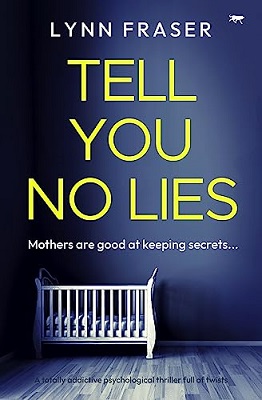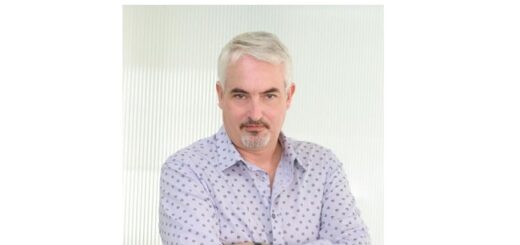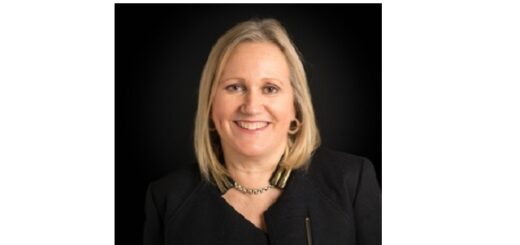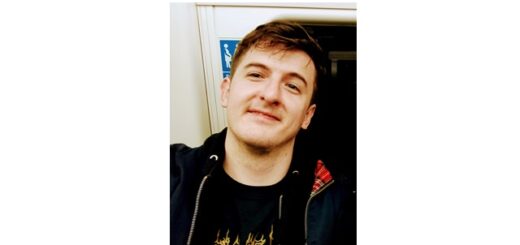Interview with Author Lynn Fraser
Lynn Fraser
I am thrilled to have interviewed author Lynn Fraser, who shared with us details of her writing life, her book ‘Tell You No Lies‘, which was released on 12th July 2023, and answered a few fun questions. This post contains affiliate links.
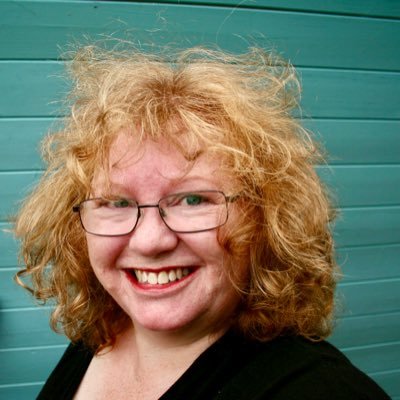
Lynn Fraser lives in Cambridge, where she wrangles a teenager, an ungrateful cat and a pack of personal demons. She is part of the growing tribe of older women writers who have had to wait until later in life – after career and family – to turn their attention to writing.
She’s fuelled by tea and rage, soothed by TV crime, books and biscuits, and dreams of the sea. As well as writing, she edits and teaches creative writing to adults and is passionate in her belief that everyone should be able to write their stories and have their voice heard.
1) Where did the inspiration for your book come from?
The initial idea for the body in the bushes came to me on a trip to the playground with my son. I imagined one of those games of hide and seek and how it might turn nasty. I saw a window overlooking the park and imagined a woman – a new mother – who might spend hours looking out. You have to understand that it can be very dull watching your child clamber over a climbing frame!
The specific idea grew from there, but I have always been interested in messy families and how badly things can go wrong. I also knew that I wanted to write about the other Cambridge, the city beyond the picture postcards of the most unequal city on the country.
2) How did you plan out the plot?
I wrote an initial scene and then, as the idea grew, I started to plot out a story.
I have a notebook. In fact, back when I started this novel, I had many notebooks and the inevitable disasters of lost drafts and ideas ensued. These days I have one notebook on the go at a time, with coloured stickers to mark the pages. Each colour denotes a different project or idea. I use the notebook for mind maps, notes about characters, drafts etc. (I’m currently a fan of the bigger Moleskine notebooks but I *love* B5 notebooks – between A5 and A4, Goldilocks would be impressed – not too big and not too small. Trust me, it’s a gamechanger.)
I have an A3 sketchbook that I like to use for wilder mind maps and big picture plotting. I have been known to break out the post it notes and a roll of paper if I’m struggling to ‘see’ the big picture and how things fit together. This novel started as a police procedural and became a story told from five point of view. It’s now told from three points of view so scenes were moved and changed quite a lot.
3) When did you choose the title for your book?
When I first started, the novel’s working title was ‘Bad Blood’. In the end, I didn’t think this said enough about what the book was about. I wanted a title that reflected the fact that the characters were all lying in one way or another, or at least not telling what they knew, and that the reader was going to need to read between the lines. It’s a character-driven story. So that title arrived reasonably late, and has stayed.
4) How did you come up with the names for your characters?
Characters are often the starting point for me, so key characters tend to arrive in my head with names. Thomas/Tommy just was – although it became important to me that his name was one that had different versions that would be used by different people in his life, and could be passed down from his dad. Writing contemporary fiction means that I want names that help readers understand who my people are, where they’re from.
If I have to ‘find’ a name, then I might Google names from the year my character was born or I might browse around Facebook at friends and friends of friends and friends of friends… you get the idea. I was asked by my editor to change the names of a couple of characters in this novel because they sounded too similar to other characters. That was hard! That *was* what they were called. I had to find names with similar vibes.
5) Can you give us a hint to any sections that you removed?
The major changes in my book came from a reduction in the number of points of view from which the story was told. Rose, Thomas’s mum, had her own chapters at one point. Her voice still lives in my head, so a version of her might have to be brought to life somewhere in the future. I tend to be an under-writer – I assume that the reader knows what’s in my head because it’s become so real to me, and then I forget to put it on the page. So editing for me often means adding, rather than deleting.
6) What made you choose this genre?
I like crime because it is a ‘bigger’ representation of what happens when messy lives get really messy – and I like writing about messy lives, dysfunctional, complicated families, screwed up people with truck loads of ‘issues’. Psychological crime seems to be what comes out of my head. Saying that, I’ve written non-crime stories as well. Messy lives seem to be the common denominator. I’m a big fan of that Philip Larkin poem – ‘They f*** you up, your mum and dad, they may not mean to, but they do…’
I also like the slow reveal of crime – the withholding of information and the use of misdirection and subtext.
7) How long did it take you to complete your book?
I think I first started sketching out ideas for this story seven years ago – although that initial scene I had in the park might have appeared earlier than that. Sometimes a character or a scene comes into my head and I write it down and leave it. Then it might come back to me, or I’ll think of something that fits with it and I’m off with it again.
Recently I remembered a short story I’d written about a child abducted from a beach by a woman taking photographs. I became curious about what happened next and then why the woman took the child. So I had to write it. In between an initial idea and a finished story, I’ll often write other things. I’m constantly making notes of ideas, going back to old ones and writing more of them, shelving and then re-writing.
8) Can you describe your book in three words?
Motherhood is murder.
9) What’s the hardest part of being a writer?
How hard it can be to get ‘heard’. You can write creatively for many reasons, but when you write a novel it is, usually, an attempt to communicate. The communication isn’t complete until you’ve been read and your ‘message’ has been received. And so much of that is out of your control. You can write your novel but you can’t just show it to someone – they have to be willing to invest hours in reading it. You write your story as well as you can, but if it’s not something the ‘market’ wants then it is unlikely to be published (yes, you can self-publish but that only gets the book out there, it doesn’t necessarily get it read). You can spend months or years creating something and no one but you might read it.
Even once you’ve written the right book at the right time, you need to polish the hell out of it and then you have to find the right people to send it to and sell it. If you can’t pay for help, you have to do all of that on your own, and it can be hard. I teach community creative writing classes and I always talk and teach not just about writing stories, but the ways to make that story commercially viable and ways into publishing. I think new voices need to be heard and I’m doing my little bit to remove some of the mystery so that the aspiring authors I encounter can at least find the doors to hammer on and have an understanding of what they need to get through them. (There’s also the isolation, but that’s both hard and really quite nice – I can only ‘people’ sometimes.)
10) Why should our readers pick your book up?
Oh, heavens! I’d say for the people, particularly the women, but Tommy as well. If you read crime, you’ll have read about similar murders, maybe, but I hope you won’t have met these people before, heard their voices, understood their lives. And if you know picture-postcard Cambridge, maybe you might like a glimpse into the rest of the city – the most unequal city in the country.
Publisher – Bloodhound Books
Pages – 285
Release Date – 12th July 2023
ISBN 13 – 978-1504086721
Format – ebook, paperback
Synopsis
When a teenage boy is found dead in a Cambridge park, three women are determined to keep their secrets hidden . . .
Emma, a detective’s wife, watches the park outside her window where a body was discovered. She sees contagion everywhere—even in her new baby. Emma was there the night of the murder, but as her mind spirals, can she be certain about what took place?
Jenny’s son had fought with the victim at school and didn’t come home that night. The detective is Jenny’s son’s father. She knows she should say something to him. But will she?
Sandra is the victim’s grandmother. She’s aware that murder investigations focus close to home. Is she also hiding something?
Only the police seem to care about the boy or the circumstances of his death. And if they don’t uncover the truth soon, there may be more tragedy to come . . .
Purchase Online From:
Fun Questions

1) Do you have a writing buddy (i.e. a pet)?
I have a writing companion, but I wouldn’t say she was my buddy. In fact, the fluff cat (Miss Kitty Gillespie von Fluffster) tolerates me. She *loves* my husband. I come down to find the two of them sitting on the sofa – she’ll be lying with her belly exposed or resting a paw on his thigh – while they listen to cool jazz together. The look she gives me! She is, however, fond of the writing shed at the end of the garden, so she will deign to join me there.
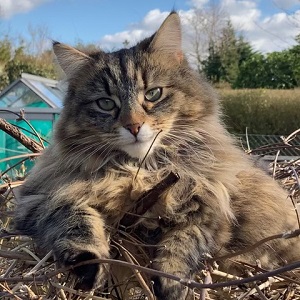
2) Do you have any writing quirks?
I need tea, much, much tea. I developed a very bad biscuit habit at one point (tea is a gateway drug), but had to break myself of it. I listen to music that disappears – something bland and melodic that takes the edge off the silence but doesn’t intrude. (I will not name names to avoid causing offence.)
3) Where do you write?
I prefer a comfy chair, or even bed, to a desk. For gathering ideas, cafes are fun, but I need to retreat to let the films in my head play out the story. I have a shed for writing at the end of the garden, but it’s freezing in winter and boiling in summer – so for about four days a year it’s perfect.

4) Your book has been made into a movie, you’ve been offered a cameo role, what will you be doing?
Trimming some hedges.
5) A talking owl has just finished reading your book, what’s the first thing he says to you?
‘I’m a little peckish – about those ferrets…’
Author links
Goodreads
Website
A big thank you to Lynn Fraser for sharing her writing life with us and for a wonderful interview.


